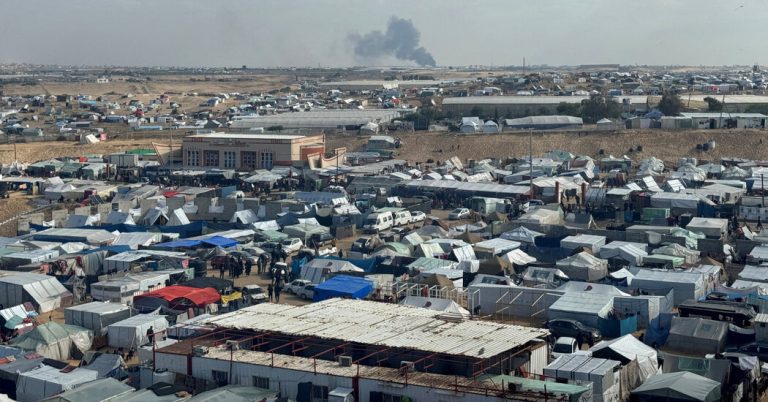An escalation of the war in Gaza could lead to 85,000 Palestinian deaths from injury and disease in the next six months, the worst of three scenarios that prominent epidemiologists have formulated in an attempt to understand the conflict’s likely future death toll.
These deaths will add to the more than 29,000 deaths in Gaza that local authorities have attributed to the conflict since it began in October. The estimate represents “excess deaths,” above what would be expected in the absence of war.
In a second scenario, assuming no change in the current level of fighting or humanitarian access, there could be an additional 58,260 deaths in the enclave over the next six months, according to researchers from Johns Hopkins University and the London School of Hygiene and Tropical Medicine. Medicine.
That number could rise to 66,720 if there were outbreaks of infectious diseases such as cholera, according to their analysis.
Even in the best of three scenarios the research team outlined — an immediate and lasting ceasefire without an outbreak of infectious diseases — another 6,500 Gazans could die in the next six months as a direct result of the war, according to the analysis.
The population of the Gaza Strip before the war was 2.2 million.
“This is not a political message or advocacy,” said Dr. Francesco Checchi, professor of epidemiology and international health at the London School of Hygiene and Tropical Medicine.
“We just wanted to put it on people’s minds and on the desks of decision-makers,” he added, “so it can be said afterwards that when those decisions were made, there was some evidence available about how this was going to play out. out of view of life’.
Dr. Checchi and his colleagues calculated the predicted excess deaths from health data available for Gaza before the war began and from that collected after more than four months of fighting.
Their study looks at deaths from traumatic injuries, infectious diseases, maternal and neonatal causes, and non-communicable diseases for which people can no longer receive medicine or treatment, such as dialysis.
Dr Checchi said the analysis made it possible to quantify the potential impact of a ceasefire on lives. “The decisions to be taken in the coming days and weeks are of enormous importance in terms of the evolution of the death toll in Gaza,” he said.
The projected 6,500 deaths even with a ceasefire are based on the assumption that there will be no infectious disease outbreaks. With an outbreak of cholera, measles, polio or meningitis, that number would be 11,580, said Dr. Paul Spiegel, director of the Hopkins Center for Humane Health and author of the study, which has not been peer-reviewed.
While it is clear that a military escalation would bring additional casualties, he added, policymakers should be aware of the range of death tolls these scenarios show.
“We hope to bring some reality to it,” Dr. Spiegel said. “That’s 85,000 extra deaths in a population where 1.2 percent of that population has already been killed.”
Patrick Ball, an expert in the quantitative analysis of conflict deaths who was not involved in the research, said it was unusual to see such a rigorous effort to calculate the potential humanitarian cost of an ongoing war.
“The paper illuminates this conflict in a way that we haven’t in previous conflicts,” said Dr. Ball, who is director of research for the Human Rights Data Analysis Group, a nonprofit organization. “It illuminates the potential cost in human lives and human suffering of various kinds of future actions that are under human control.”
“People will make decisions that lead to one of these three scenarios, or some complex mixture of them, and this gives us a sense of what the likely outcomes of those decisions are,” he added.
The analysis predicts that deaths from traumatic injuries in Gaza over the next six months will be spread across all ages and genders.
“Forty-three percent of deaths from injuries occur in women and 42 percent are in children under the age of 19,” the paper says, which “reflects the intensity and widespread nature of the bombing.”
Even with an immediate ceasefire, war-related deaths would continue, according to the analysis. The toll includes deaths of people who succumbed to pre-existing injuries or were injured by unexploded ordnance, deaths of infants and women unable to provide sophisticated care during childbirth, and deaths of malnourished children unable to fight off infections such as pneumonia.
“I don’t think people realize how long it will take for this to change,” Dr. Spiegel said.




